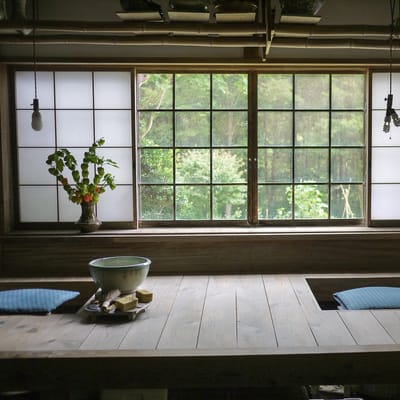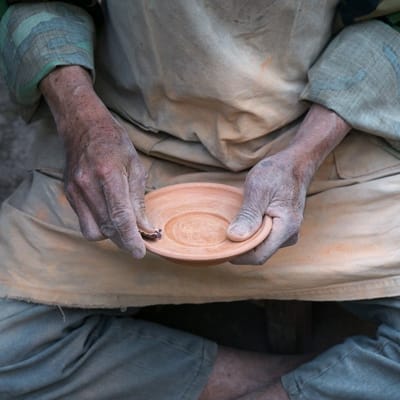Gopi Shah is a Los Angeles native who started her ceramics business in Austin, Texas in 2014.
Having recently returned to California to set up shop in the San Francisco Bay Area, Gopi talks about her experiences living in these cities and her day-to-day studio process. From making wheel-thrown cups and bowls, to the creation of her signature worry dolls and clay people, Gopi hand-crafts each piece that she later sells at local fairs and boutiques.
THE KINDCRAFT
How did you begin as a ceramicist?
GOPI SHAW
I began working with clay in high school under an inspiring teacher, John Luebtow, who allows his students to be experimental. Learning under a teacher like him motivated me to stretch the boundaries of clay.
Later, I studied at the School of the Museum of Fine Arts in Boston, and then took classes at Santa Monica College in California while working at an environmental non-profit. When my partner and I moved from my hometown of L.A. to Austin 2014, he encouraged me to pursue my passion of the ceramic arts. In Austin I worked under my current mentor, Jennifer Prichard, and that first year of my business was a time of exponential learning and growth. In 2015 I started pursuing my business full-time.
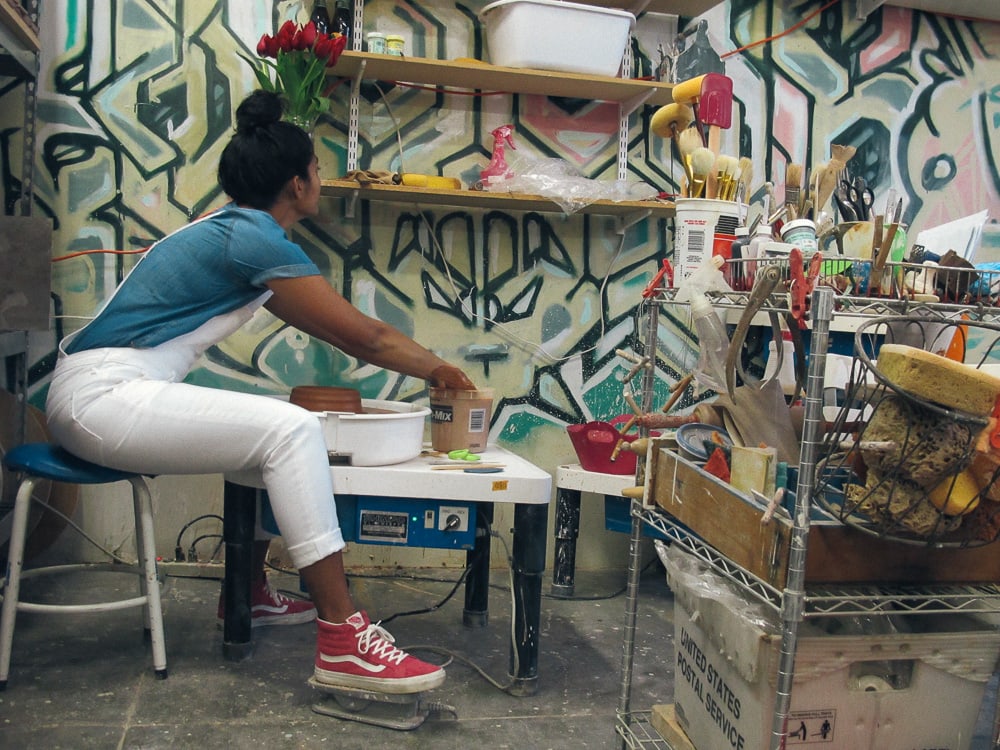
THE KINDCRAFT
What inspires you?
GOPI SHAW
Like many artists, I am inspired by nearly everything: an overheard conversation, a deteriorating brick wall, a seemingly random pattern found in nature.
The ocean and mountains of California are awe-inspiring. Being in such close proximity to natural wonders such as Big Sur, Yosemite, and the Redwood National and State Parks it is hard not to be inspired by Mother Nature.
I really love textile patterns like batik, tie dye, and bògòlanfini (Malian mud cloth). It is interesting to learn about these fabric dyeing processes. Sometimes these techniques translate well to clay: batik patterns are created with a wax-resist technique on fabric, and a there are similar wax-resist techniques that can create patterns in clay. You can't wring a pot to create a tie dye effect like you can with fabric, but you can experiment with glaze chemistry, hand painting, or sponging.


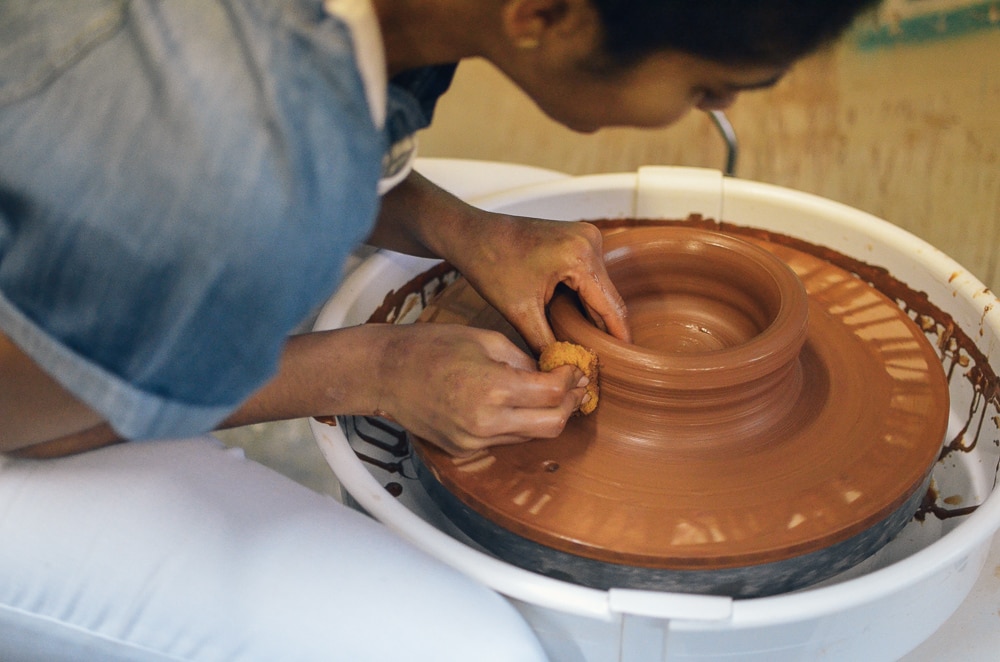

THE KINDCRAFT
Tell us about your studio and your daily routine.
GOPI SHAW
My current studio is a beautiful double-wide garage with roll up doors in sunny San Rafael, located 30 minutes north of San Francisco. I usually arrive at the studio around 9 or 10 AM and work until the sun starts to fade. San Rafael is a cute little town that’s very walkable and friendly. I can do all my business errands and shopping locally, stopping for a cup of coffee and a pastry at a worker-owned co-op called Arizmendi Bakery.
I try to organize my day before I get into the studio: I plan out wet clay, trimming, and glazing days. I break those days down even further into what type of clay I am using, if I will be throwing or hand-building, and what color glaze or glaze technique I am focusing on. This helps the flow of my production work, and keeps my clay and glazes from being contaminated by other materials.
When I’m not busy, I try to have fun days where I work on new ideas or concepts, or I just throw new shapes. It is good for me to switch it up and get excited about something new.

THE KINDCRAFT
What materials are you using?
GOPI SHAW
The ceramics supply shop that services the Bay Area is incredible! I get all my materials from one store that is about 10 minutes away from my studio. They have a hundred different types of clay, several hundreds of glazes, and every type of tool. It is hard to walk out of the store without buying at least one new clay body, glaze, tool, or contraption to experiment with.
Making glazes is kind of like baking: you add a bunch of dry ingredients together, mix with water, strain, and Voila! You have a glaze! Pre-made glazes are much more expensive than buying the raw materials, but that requires an understanding of glaze chemistry and a lot of experimentation. Making glazes from scratch takes patience and it can be frustrating when you don't get what you were expecting. But, with ceramics in general, it's best to keep expectations low because the unexpected can be gorgeous in its own way.


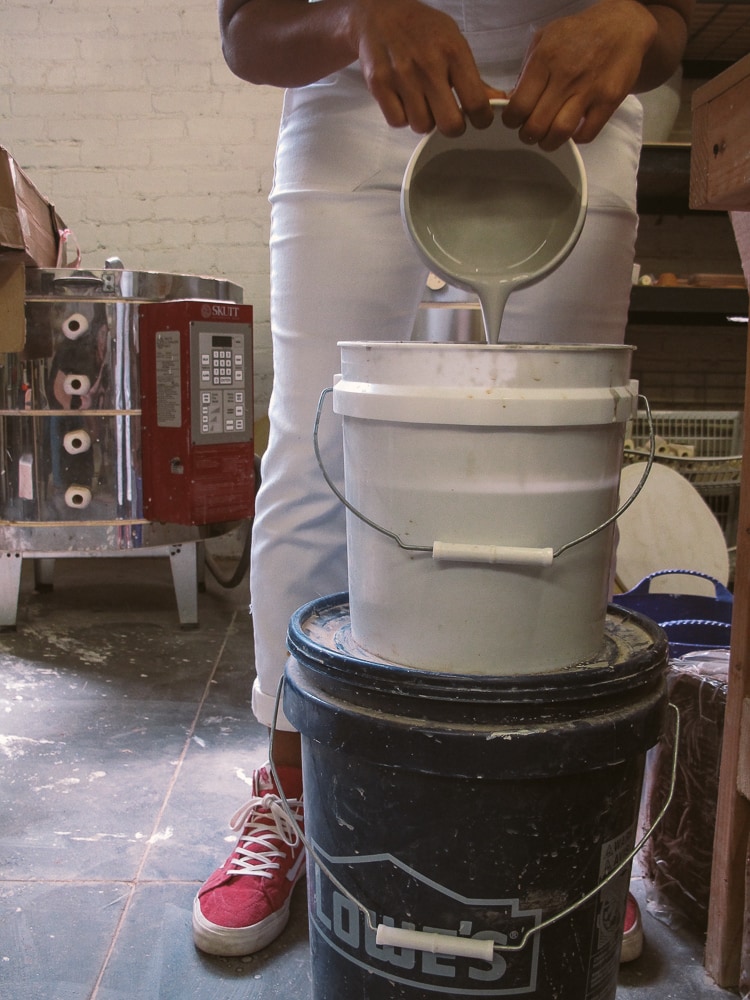



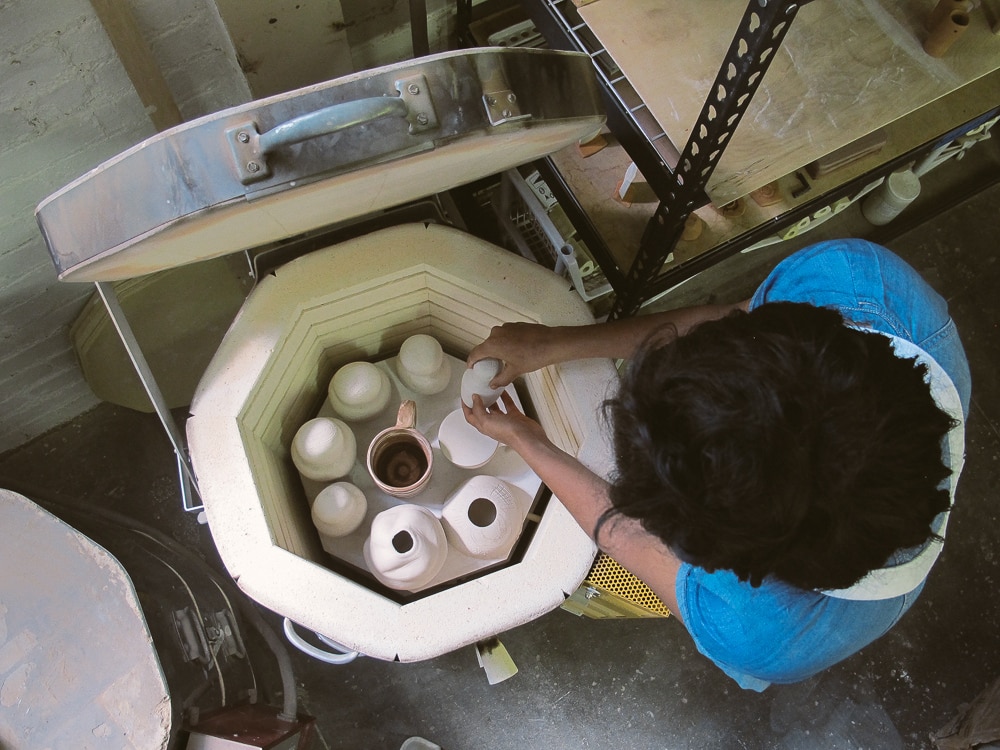

THE KINDCRAFT
Describe the maker scene where you started in Austin, Texas.
GOPI SHAW
I found it to be a very nurturing environment to begin my business because I came at it with an open mind. In my hometown of L.A., I was intimidated by successful ceramicists and the idea of starting a business in an expensive city on a low salary at a non-profit organization. Austin is more affordable than California, so I did not feel as guilty financing the start of my artistic pursuits and I was still able to have a comfortable quality of life. Austin is also was very welcoming: it was easy to make friends, meet artists, and embed myself into the community. I felt content there, and I definitely miss many aspects of Austin.
THE KINDCRAFT
And how is it different in San Francisco?
GOPI SHAW
I have only been in San Francisco for about a year, but I feel like it is a beast of a city. It was hard to move from such a welcoming place like Austin where everyone says "Hello" to San Francisco where the streets are full of people who would rather stare at their phone than strike up a conversation with a stranger. During my first four months in San Francisco I didn't have a studio, which was deflating for me personally and for my business.
There are many incredible artists in this city, but the high cost of living is pushing artists out of the Bay Area. San Francisco seems to be a very transient city as most people cannot afford to stay here long-term or to raise a family. This prevents community bonds from forming, which is something that is important to me.
On the other hand, I have never felt more inspired and true to myself and my art than I have here. I love having world-class museums at my fingertips, and access to beautiful natural landscapes like Tahoe and Mt Tamalpais. The buzz of the city motivates me to be better at my craft. It is a hard trade off, and I'm still figuring it out if San Francisco is the right place for me, and I think that's ok!
How does your cultural heritage play out in your work?
This is a tough question for me because it brings up a lot of emotions and spans cultural boundaries. My parents were the only ones from their families to immigrate to America from India. When my sisters and I were young, they bridged the cultural gap by teaching us one of their three native languages, introducing us Indian dance classes, and creating a community of Indian people in Los Angeles. Pottery is not an esteemed profession in India and my parents knew that ceramics would be a difficult path for me. They were all but encouraging. To them, success is a formal education and financial stability - not happiness found in pursuing one's passions. Also, my parents don't necessarily understand America's current handmade movement, and I haven’t come across many other Indian artists at craft fairs. I would love to see more racial diversity in America's maker movement.
People have told me that the lace hands I make look like mehndi, and my fascination for textiles comes from seeing heavily embroidered patterns on my mom's traditional Indian clothing. I think this dichotomy of culture has made me a stronger person and business owner, but I still am my own harshest critic with my family as a close second.
Tell us about your ceramic worry dolls.
In 2012, I hit a bit of a bump in my life: my partner of six years and I had broken up and I moved to a new neighborhood in L.A. where I didn't have many friends. Luckily, my best friend was looking for housing at the time and she ended up staying with me for a few months. I wasn't sleeping well during that time so my friend gave me a little Guatemalan worry doll to keep under my pillow. Somehow, it helped me get through that period of my life.
In 2015, I visited several museums that housed small figurines and was inspired to start making my own worry dolls. If people use them to take their worries away - as I did with my first doll - that would be fantastic!




Where do you sell your ceramics?
Renegade Craft Fair. The staff that runs Renegade is supportive, kind, and engaging. They even helped me get my very own FedEx commercial. I love seeing customers interact with my wares and when they ask me questions. I even met two of my good friends at Renegade!
I walked by a shop in San Francisco the other day and squealed because my work was on display in the window! It just reminded me of how much I love what I do - and to keep at it even though I may suffer from small life crises every now and then.
This interview has been edited for clarity and length. Photos by Kate Parrish.




